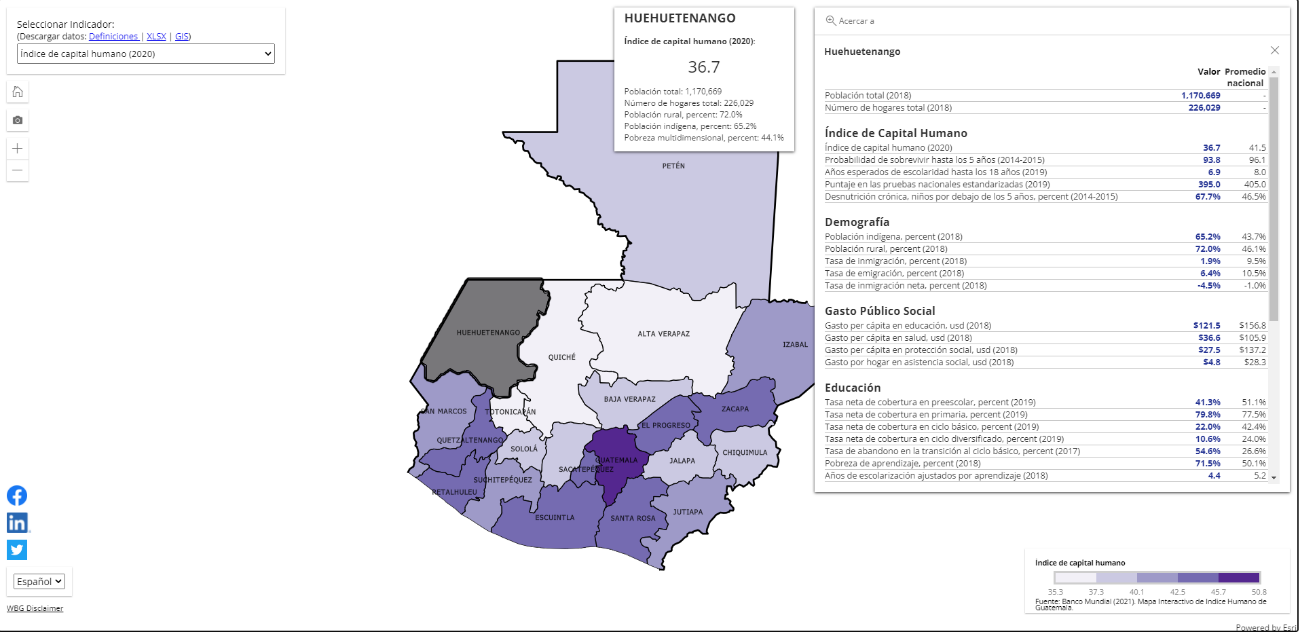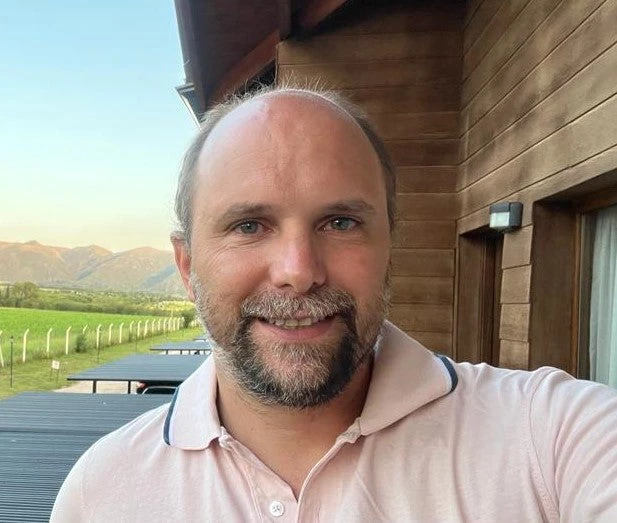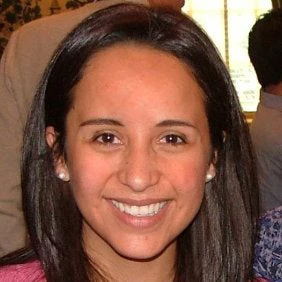Maria and her schoolmates live in Totonicapán, a largely indigenous department in western Guatemala. Although Maria and her friends are eager to study, they are expected to reach only 35 % of their potential productivity as adults, like the poorest countries in Africa, due to lack of investments in their country on health, education and nutrition during their early years.
The unrealized potential of Guatemala's children is like a buried treasure: valuable, but not accessible without a map to find it.
How big is this treasure? One way to measure it is through the Human Capital Index, which shows how much potential children born in a country can achieve on average when they grow up and enter the labor market. In Guatemala, children only reach an average of 46 % of their potential productivity.
Can you imagine unearthing this hidden treasure among all children of this country?
In the case of Guatemala, the World Bank has measured this potential at the departmental level, and it is showcasing the results through a powerful tool: the interactive map of human capital in Guatemala.
A map to find hidden human capital
- Human Capital Index
- Demographics
- Public Social Spending
- Education
- Health
- Social Protection
When an indicator corresponding to one of these thematic areas is selected in the upper left panel, the different departments of Guatemala are automatically colored with different shades to highlight the regions that show greater deficits in the selected indicator.
This allows to quickly identify, for example, that in the department where María and her friends live, Totonicapán, 70 % of children under 5 years have chronic malnutrition. Yet, this is one of the departments where the government invests the least per capita in social protection (USD 22.6 dollars).
On top of visually displaying numerous statistics at the departmental level in a very user-friendly way, when you click in a department, this opens a table that shows all the indicators of the department benchmarked to the national average.
This makes easy to visualize that the department where Maria lives is not only the one with the highest chronic malnutrition rate in the country, but also the one with the lowest years of schooling expected at age 18 (5.9 years).
Lastly, all the data underlying the interactive human capital map of Guatemala can be downloaded in Excel of GIS formats, as well as the definitions and data sources for each indicator (in Word format).
Once the treasure is found, how do we dig it up?
The interactive map of human capital in Guatemala is, like any map, just a tool. While it provides a better understanding of where in the country children are furthest from their potential productivity, finding the location of the treasure is only the first step.
Digging up the treasure means increasing the investments in human capital in the country so that all children, irrespective of their socioeconomic status, can reach their full potential. This is now an easy task, but it certainly an essential one.
Although digging up the treasure of human capital is more difficult than finding it, the map can also help in this task. Its main contribution lies in the fact that it helps identify key areas for prioritizing human development interventions at the department level (i.e., health, education, or social protection interventions) .
Therefore, the map can serve as a guide to focus efforts on the geographic areas where the greatest benefit can be derived from every move made with the shovel to unearth the treasure.
We invite you explore the map of Guatemala’s most valuable treasure. In this way, you will be contributing to fuel the debate on the importance of investing on human capital in the country so that we can all help Maria, and her friends reach their full potential productivity when they reach adulthood. We hope you find it useful and enjoy this quest!







Join the Conversation